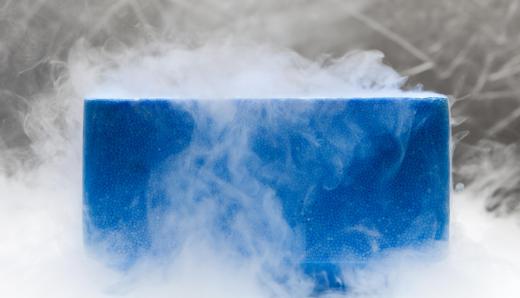What is Cryopreservation?
Cryopreservation is a method of preserving biological tissue or cells at extremely low temperatures. Although there are many applications of cryopreservation, the most common uses of the process are to preserve sperm, embryos, eggs, and plant seeds. There is also a variant of the process known as cryogenics which seeks to preserve people after death in the hope of reviving them in the future.
Cryopreservation occurs when tissue is frozen, generally in liquid nitrogen, until it reaches a temperature range of at least -148 degrees Fahrenheit (-100 degrees Celsius). At these temperatures, tissue is preserved in a state similar to that of suspended animation. The metabolic processes of biological tissue slow down dramatically in the extreme cold, which in turn slows down the natural decaying process. The word cryopreservation is derived from the Greek word kryos, which means cold.

The cryopreservation process is not just simply freezing the tissue to be preserved. During the freezing process, liquids present in cells expand as they solidify. This expansion would cause the destruction of the cells and would negate any benefit of freezing biological tissue. Cryopreservation usually involves replacing the liquid in the tissue with a solution similar to anti-freeze that can withstand the extreme cold temperatures.

Sperm is typically preserved for the purpose of artificial insemination or in-vitro fertilization. When a male provides a sperm sample, the specimen is frozen between the temperatures of -175 degrees Fahrenheit (-115 degrees Celsius) and -320 degrees Fahrenheit (-196 degrees Celsius) to keep the sample viable until its use is required. Sperm has a maximum lifespan of only two to four days, therefore if sperm is not preserved, it can be considerably more difficult to perform artificial insemination or in-vitro fertilization on a convenient and effective timetable.
Artificial insemination is a method of inserting sperm into the female reproductive organs with the goal of achieving a pregnancy. The first instance of human birth as a result of using cryopreserved sperm occurred in the early 1950s. Embryos may be cryopreserved for in-vitro fertilization. Once an egg has been fertilized, the embryo can be stored for an extended period of time for future use. The first instance of a human birth from an embryo that had been cryopreserved was reported in the early 1980s.
Cryopreservation can also be used to preserve plant seeds and tissue. Seeds are often frozen to maintain a diverse genetic record. Seeds are often preserved for use in the event of a large scale destruction of rare or endangered plants. The preserved seeds can then be used to regenerate plant crops.
Some plants are not prolific seed producers, or their seeds would no longer be viable if frozen. In these instances, plant tissue or cells can be cryopreserved. Cryopreservation of tissue and cells would enable the regeneration of plants without the use of seeds.
AS FEATURED ON:
AS FEATURED ON:












Discussion Comments
I thought that seeds were being preserved in dry form? Is there a benefit from freezing them rather than drying them?
I think that drying would be an easier and less expensive method. Plus, cryopreservation requires labs, equipment, scientists and electricity. But dry seeds don't need any of it. If maintained properly, we can use dry seed hundreds of years from now. But maintaining frozen seeds for that long sounds like a much tougher task to me.
I hope that cryopreservation can be used for organs as well in the near future. There are so many patients waiting for organ donations but the waiting lists are so long that their health deteriorates as they wait.
I feel so helpless when I see little kids waiting for a heart or kidney transplant. But if we could use cryopreservation for organs, then we could have something like an organ bank just as we have seed banks. We wouldn't rely on recent deaths to provide organs for patients. We could use one that was donated several years ago. And patients wouldn't have to wait so long. Their chances of survival would really improve.
Don't you agree with me? Shouldn't we increase efforts towards organ cryopreservation?
I had no idea that sperm and embryo cryopreservation is possible. I always thought that they were used immediately.
Cryopreservation is clearly a beneficial method, like with preserving seeds. But somehow, the thought of being able to freeze and preserve an embryo freaks me out a little bit. I feel like this preservation method could be used in a threatening way too.
Like cryopreservation of a virus for example? Is it possible?
In what situations is cryopreservation allowed? Who oversees it in the U.S.?
Post your comments